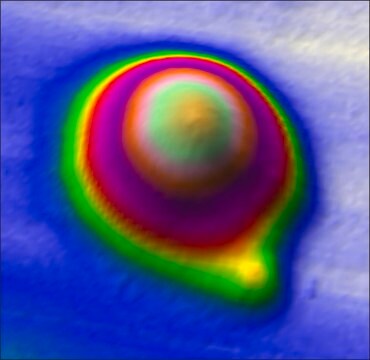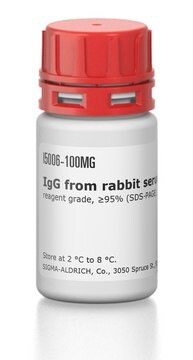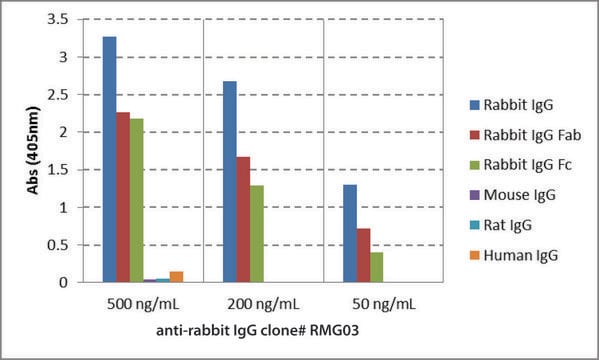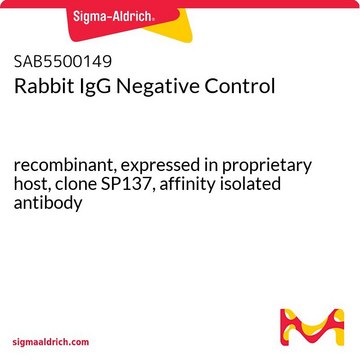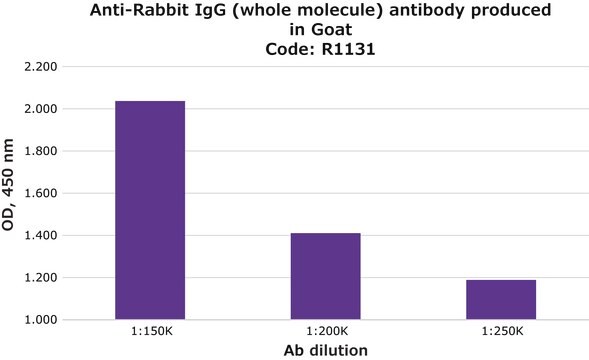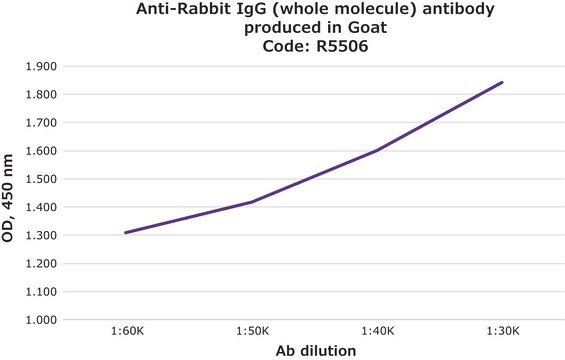R2655
Anti-Rabbit IgG, Native antibody, Mouse monoclonal
clone RabT-50, purified from hybridoma cell culture
About This Item
Recommended Products
biological source
mouse
conjugate
unconjugated
antibody form
purified immunoglobulin
antibody product type
secondary antibodies
clone
RabT-50, monoclonal
form
buffered aqueous solution
species reactivity
rabbit
should not react with
human, rat, chicken, cat, bovine, monkey, goat, pig, horse
concentration
~1 mg/mL
technique(s)
immunocytochemistry: suitable
indirect ELISA: suitable
western blot: 1-2 μg/mL using 10 ng of non-reduced rabbit IgG (Cat. No. I5006) per lane
isotype
IgG1
shipped in
dry ice
storage temp.
−20°C
target post-translational modification
unmodified
Related Categories
General description
Specificity
Immunogen
Application
- immunoblotting
- immunocytochemistry
- immunohistochemistry
- enzyme-linked immunosorbent assay (ELISA)
Biochem/physiol Actions
Physical form
Storage and Stability
Disclaimer
Not finding the right product?
Try our Product Selector Tool.
related product
Storage Class Code
10 - Combustible liquids
Flash Point(F)
Not applicable
Flash Point(C)
Not applicable
Personal Protective Equipment
Choose from one of the most recent versions:
Already Own This Product?
Find documentation for the products that you have recently purchased in the Document Library.
Customers Also Viewed
Our team of scientists has experience in all areas of research including Life Science, Material Science, Chemical Synthesis, Chromatography, Analytical and many others.
Contact Technical Service


